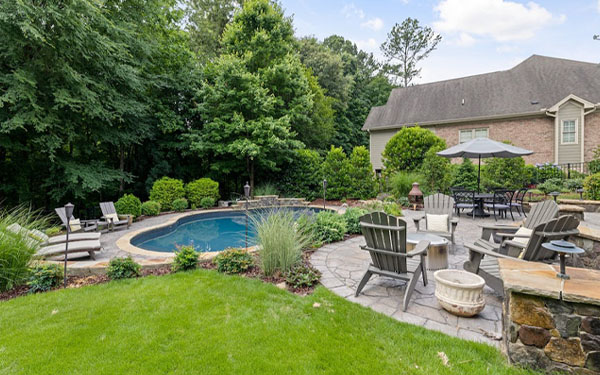Table of Contents
ToggleGarden decoration ideas - 5 steps to help you create a comfortable garden
A well-decorated garden can add to the aesthetic appeal of your home, making it more visually appealing. A beautiful garden can be a peaceful retreat where you can unwind, relax and find respite from the stress of everyday life. Plants in your garden can improve the air quality around your home by absorbing pollutants and producing oxygen. A well-maintained and decorated garden can increase the value of your property, especially if you decide to sell your home.
5 steps to help you create a comfortable garden
Step 1: Plan Your Seating Area
The first step in making your garden comfortable is to plan your seating area. Choose a location that is sheltered from the wind and has a view of the garden. Consider placing a bench or chairs under a pergola or tree for shade, or on a patio or deck for a more formal seating area. You might also want to include a small table for holding drinks or snacks.
a). Pick a sunny spot for your seating area to make the most of the daylight hours.
b). Make sure there’s enough room for you and your guests to move around comfortably.
c). Add some plants or flowers to your seating area to add a pop of color and life.
d). Choose the furniture and color you want in your seating area, like a couch or armchair, as well as a coffee table or side table to rest drinks and snacks on.
e). Set up lighting near the seating area for parties or events even if it can be used at night time.
f). You could even create a shed in case of rain and excess sunlight, if you live in a winter location you could create a Polymer fiberglass sliding shed.
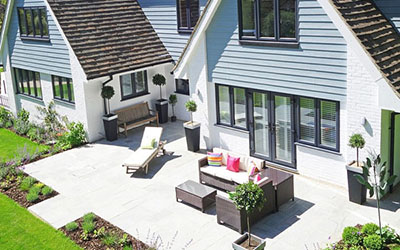
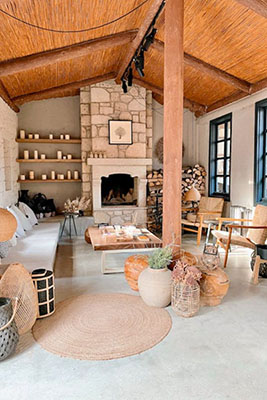
Step 2: Add Soft Textures
Outdoor living spaces are often thought of as being harsher and less inviting than indoor spaces. However, by adding soft textures like cushions, rugs, and throws, you can make your outdoor seating area feel cozy and comfortable. These items can provide a soft place to rest and relax, making your outdoor space feel more like an extension of your indoor living area. In addition to providing comfort, soft textures can also help to create a sense of warmth and intimacy in your seating area, making it a more inviting and welcoming space.
Sunbrella and Olefin fabrics are great choices for outdoor cushions and rugs because they are durable and resistant to fading, stains, and mildew. These fabrics are also easy to clean and maintain, so you can enjoy your outdoor seating area without worrying about damage from the sun, rain, or other weather conditions.
Soft textures aren’t just functional, they can also be used to add color and style to your outdoor seating area. By choosing colors that complement your garden and other outdoor elements, you can create a cohesive look even grouped by color type. For example, if your garden features shades of blue and green, you might choose cushions and throws in complementary colors such as aqua, teal, or chartreuse. This is attractive looking and feeling.
To add depth and interest to your garden area, start by layering different textures and colors. You might place a soft rug under your seating area and add cushions and throws in different fabrics and patterns. This can create a cozy, inviting space that feels both stylish and comfortable.
Outdoor seating areas are all about comfort and relaxation, so don’t be afraid to experiment with different combinations of soft textures. Play with different colors, patterns, and textures until you find a combination that feels just right for your space. Remember, the goal is to create a seating area that feels comfortable and inviting, so don’t be worried to add plenty of cushions, throws, and rugs to achieve that cozy, welcoming feel.
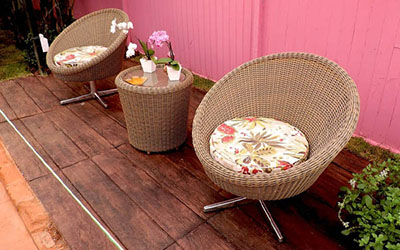
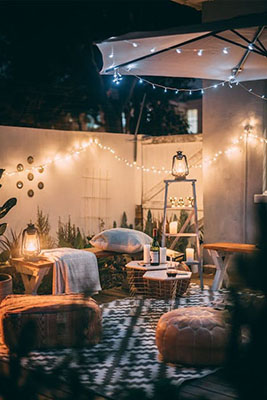
Step 3: Incorporate Lighting
Good lighting is essential for creating a comfortable garden, especially in the evening. Install outdoor lights along pathways, around the seating area, and near the entrance to the garden to provide both safety and ambiance. Consider adding string lights, lanterns, or candles to add a warm and cozy glow.
The purpose of the lighting: Before you start setting up lights in your garden, it’s essential to know why you want the lighting in the first place. Is it for aesthetic, safety, or functional purposes such as entertaining or illuminating pathways? Having a clear idea of the purpose will help you choose the right type and location of lights.
Plan the lighting layout: Once you know the purpose, you can plan where you want the lights to be placed. You can use a sketch or a software program to create a garden layout, including the location of trees, shrubs, pathways, and other features, where you want to place the lights, and how many you will need.
Choose the right lights: There are various types of lights to choose such as LED lights, solar lights, and low-voltage lights. Consider the type of lighting that will suit your purpose and the overall look of your garden. For example, if you want a warm, inviting atmosphere, consider using LED lights or low-voltage lights, while if you want a more natural look, consider using solar lights.
Install the lights: Once you have the lights and the layout planned, you can either hire a professional or do it yourself if you’re handy with tools. Make sure to follow the manufacturer’s instructions and observe safety precautions. Consider using a timer or motion sensor to conserve energy and make it more convenient when installing lights.
Test and Adjust: Once your lights are installed, test them and make any necessary adjustments. Make sure the light is not too bright or too dark and illuminates the intended area. You can adjust the angle of the light to get the best effect. Remember that lighting should complement your garden, not overwhelm it.
In summary, adding lighting to your garden can be a fun and rewarding project that can transform your outdoor space into a warm and welcoming area. By following these five steps, you can create beautiful and functional lighting designs that you and your family will enjoy for years to come.
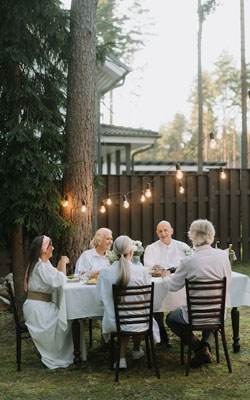
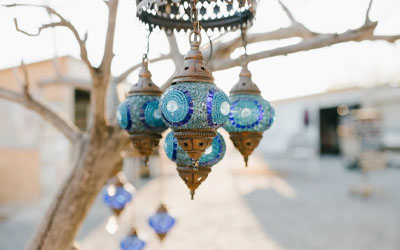
Step 4: Consider the Soundscape
The sounds of nature can greatly enhance the overall experience of being in your garden. Consider adding water features like a fountain, pond, or bird bath, and wind chimes, bells, or other metal sculptures to create musical sounds.
Understanding the Soundscape:
The soundscape in a garden refers to the collection of sounds that you hear in the outdoor environment. This can include bird songs, water features, wind rustling through trees, and even human sounds like laughter and conversation. Understanding the soundscape in your garden is important as it can significantly impact the overall feel and atmosphere of the space.
Integrating Nature Sounds:
Nature sounds can have a calming effect and can enhance the sense of peace and tranquility in your garden. Consider incorporating a water feature, such as a fountain or a pond, into your garden design. The sound of water running can be very soothing and can help to mask other sounds like traffic noise. Planting bird-friendly trees and shrubs can also attract a variety of birds to your garden, providing a natural soundtrack for your outdoor space.
Managing Human Sounds:
While nature sounds can be peaceful, human sounds can be intrusive and disruptive. It’s important to manage human sounds in your garden, especially if you plan to use the space for entertaining or relaxing. Consider installing fencing or hedges to reduce noise from neighboring properties and to create a more private and peaceful environment.
Balancing Sound Levels:
Balancing the sound levels in your garden is important to ensure that you have a harmonious and comfortable soundscape. Make sure that loud sounds, like a fountain or a waterfall, do not overpower the natural sounds of birds and wind. You can also install sound-absorbing materials, like lush vegetation, to reduce noise and create a more relaxed and peaceful environment.
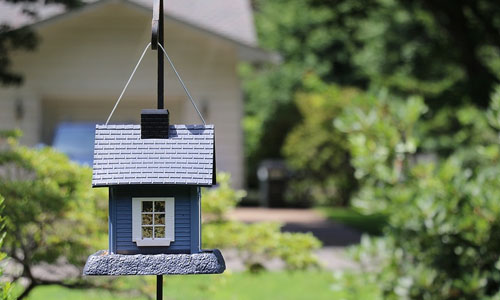
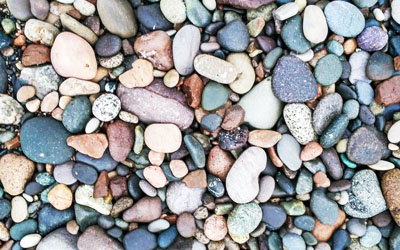

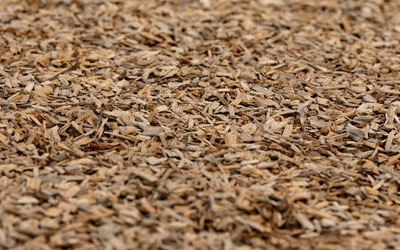
Enhancing the Soundscape:
The soundscape in your garden can be enhanced by carefully choosing the materials and features you use in your garden design. For example, you can use stone or gravel paths instead of concrete to create a more natural and soft sound when walking on them. You can also use wind chimes or bells to create a musical sound in your garden, which can be especially appealing on a breezy day.
You can use a few different materials for your home garden footpath, including gravel, concrete, stone, and mulch.
Gravel is an inexpensive option that can give your garden a rustic or natural look. Concrete is durable and long-lasting, and can be customized with different colors and textures. Natural stones like flagstone or slate can create a beautiful and unique path with a natural look.
Mulch is an affordable and eco-friendly option that can be made from wood chips or shredded leaves. However, it may not be as durable as other materials and may need to be replaced more frequently.
Another is pavers, a versatile option made from brick, concrete, or stone. They can create a sleek and modern look or a more traditional aesthetic. However, they can be more expensive and require laborers to construct the pathway.
Step 5: Create Privacy
Creating a sense of privacy and seclusion in your garden can make it feel like a private retreat. Use screens, walls, or hedges to create a sense of enclosure, and consider adding plants that provide shade and create a feeling of intimacy. With these simple steps, you can turn your garden into a comfortable and inviting outdoor space that you will love spending time in.
If you’re looking for ways to create privacy in your garden, here are a few ideas:
Install a fence:
A fence is a great way to create a physical barrier that can block the view of your neighbors. Make sure to check local regulations before installing a fence to ensure compliance with any height or placement restrictions.
Plant trees and shrubs:
Another way to create privacy is by planting trees and shrubs. This can provide a natural barrier between your property and your neighbor’s. Just be sure to consider the mature size of the plants so you don’t end up with overgrown shrubs blocking your view.
Building a pergola or trellis:
Building a pergola or trellis can add both privacy and beauty to your garden. You can grow climbing plants and flowers or vines on the structure to create a natural screen. Your garden looks beautiful.
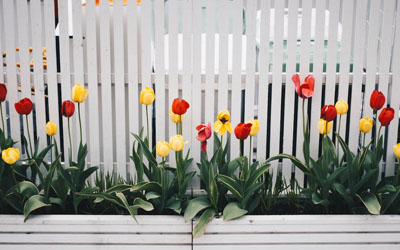
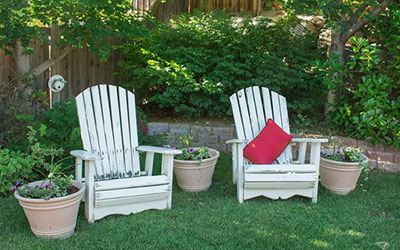
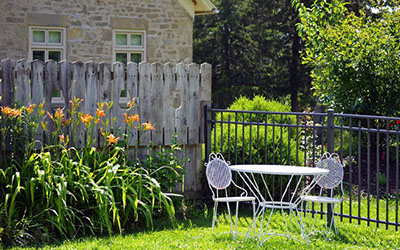
Summary
A beautiful garden can provide the perfect space for outdoor gatherings and entertaining, creating a beautiful backdrop for special occasions. You and your family can be maintaining a garden can be a physically active hobby, which can improve your fitness levels and overall health. A garden can provide a habitat for birds, insects, and other animals, increasing the biodiversity in your area and providing opportunities for nature observation.
All trademarks, logos, and brand names are the property of their respective owners. All company, product, and service names used in this website are for identification purposes only. Use of these names trademarks, and brands do not imply endorsement.


